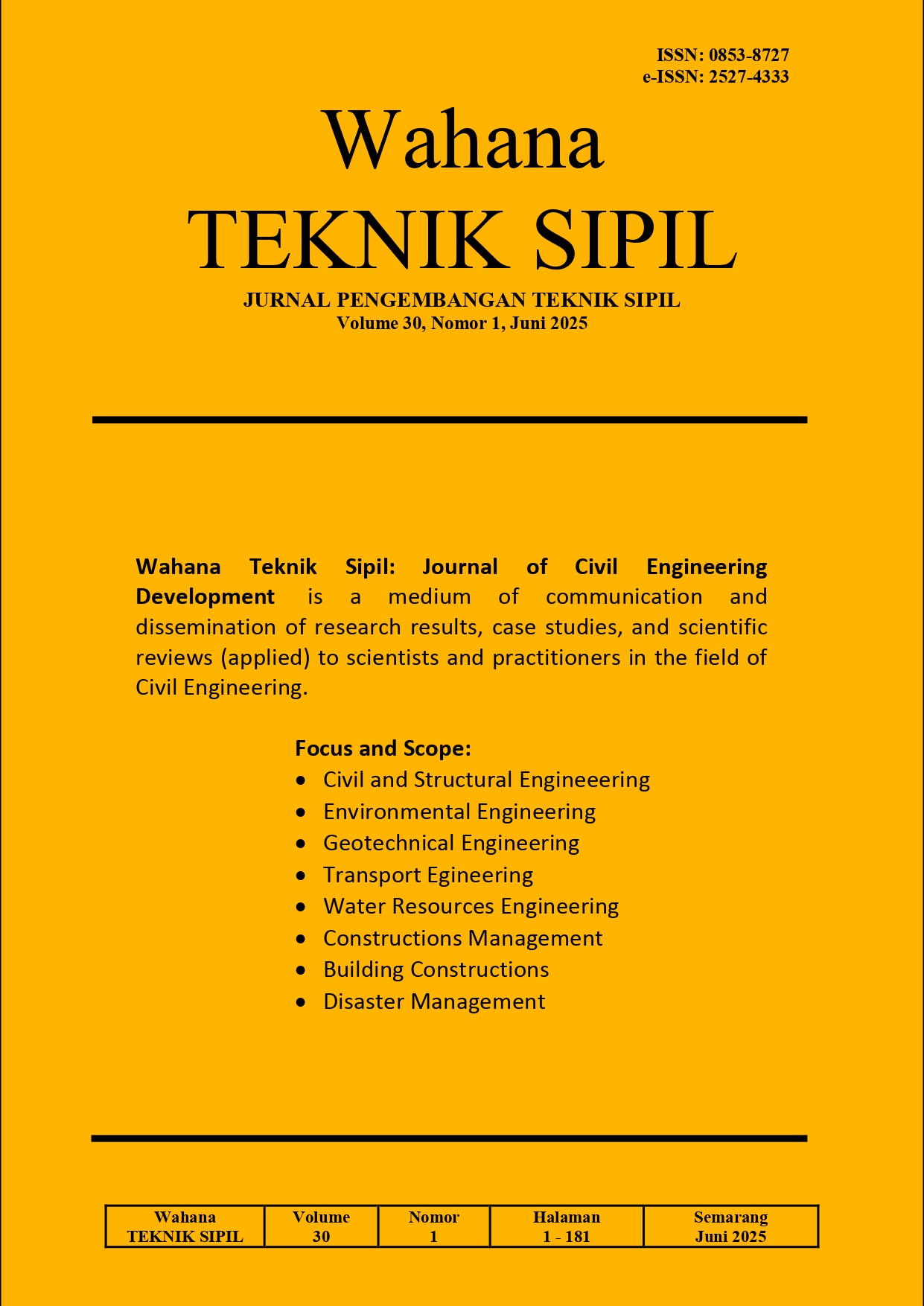PERBANDINGAN PENGGUNAAN LEM POLYURETHANE DAN MORTAR TERHADAP VARIASI WAKTU IKAT TERHADAP KEKUATAN GESER PEREKAT PADA PEMASANGAN BETON RINGAN
DOI:
https://doi.org/10.32497/wahanats.v30i1.6546Abstract
Lightweight concrete is an increasingly popular construction material because of its lightweight and high strength, so effective adhesive technology is needed to increase the adhesion between elements. This study aims to compare the effectiveness of the use of polyurethane glue with MU 380 on the variation of bonding time and shear strength of bonding in the installation of lightweight brick concrete. In this study, tests were conducted on lightweight brick concrete joints using two types of adhesives, namely polyurethane glue and mortar. The variation of bonding time applied to the application of polyurethane glue includes 5, 10, 15, 20, 25, 30, 60, 360, 720, and 1440 minutes. Meanwhile, for mortar adhesive, the bonding time used is 5, 10, 15, 20, 25, 30, 60, 360, 720, and 1440 minutes. After the application of glue and mortar, shear strength testing was carried out to determine how well the concrete joints can withstand shear loads. The results showed that polyurethane glue produced much higher shear strength than mortar at all bonding times tested. The highest average shear strength was obtained at a setting time of 25 minutes for polyurethane glue, which was 21.85 MPa, while the average maximum strength of the mortar occurred at a setting time of 360 minutes with a value of 3.123 MPa. In addition, the shorter setting time of polyurethane glue allows for better installation time efficiency.
Downloads
Published
Issue
Section
License
Copyright (c) 2025 Primasiwi Harprastanti, Fikri Praharseno, Wasino, Supriyadi, Agung Rahmatyuda

This work is licensed under a Creative Commons Attribution 4.0 International License.
Authors who publish with this journal agree to the following terms:Authors retain copyright and grant the journal right of first publication with the work simultaneously licensed under a Creative Commons Attribution License that allows others to share the work with an acknowledgement of the work's authorship and initial publication in this journal.
Authors are able to enter into separate, additional contractual arrangements for the non-exclusive distribution of the journal's published version of the work (e.g., post it to an institutional repository or publish it in a book), with an acknowledgement of its initial publication in this journal.
Authors are permitted and encouraged to post their work online (e.g., in institutional repositories or on their website) prior to and during the submission process, as it can lead to productive exchanges, as well as earlier and greater citation of published work (See The Effect of Open Access).






